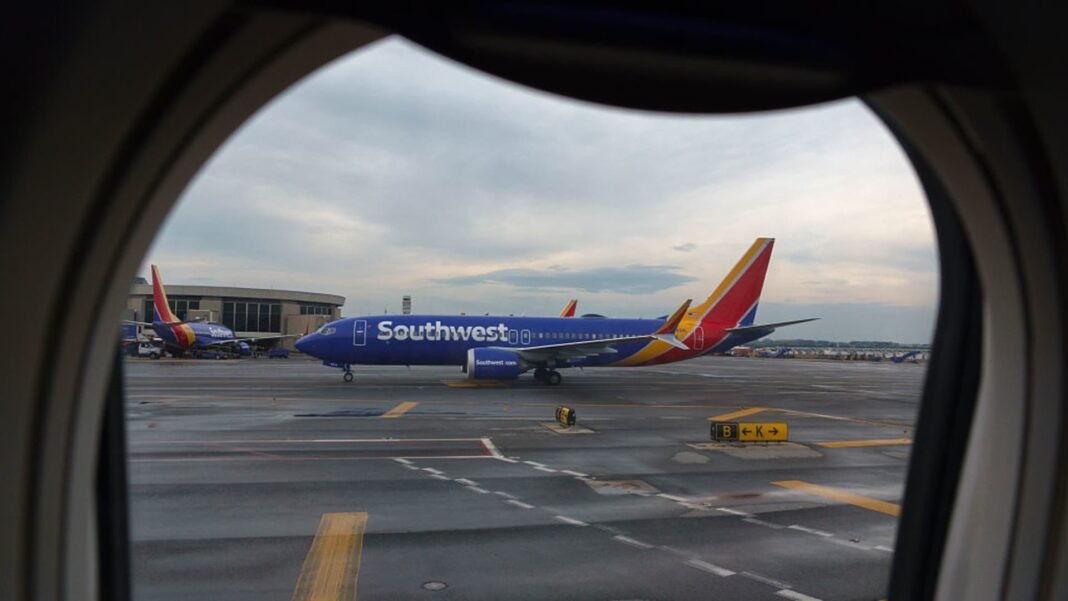Southwest Airlines Faces Mixed Outcomes in Q2 Amid Shifting Travel Dynamics
A Southwest Airlines Boeing 737 taxis at Ronald Reagan Washington National Airport in arlington, Virginia.
Financial Results Fall Short of Market Projections
Southwest Airlines announced its second-quarter earnings,which did not meet Wall Street’s expectations despite signs of stabilized travel demand. The airline reported adjusted earnings per share of 43 cents, below the forecasted 51 cents. Total revenue reached $7.24 billion, slightly under the anticipated $7.3 billion.
Adjusting to New Travel Demand Patterns
Amid ongoing economic uncertainties and softer-than-expected domestic travel earlier this year, Southwest retracted its full-year guidance in April. Similar to other carriers, it has scaled back flight frequencies during off-peak periods to better match current market demand.
The CEO noted that increased discounting during the busy summer months contributed to pressure on revenue performance.
forecast for Pricing Trends
The airline expects third-quarter unit revenue-a key measure of pricing power-to vary between a 2% decline and a 2% increase compared with the same period last year.
Evolving Customer Experiance: Transition from Open Seating to Assigned Boarding
Southwest is implementing major changes in its service model by moving away from long-standing policies such as free checked bags for all passengers and replacing open seating with assigned seats through new boarding procedures introduced recently. These shifts mark a significant departure from traditions that have defined Southwest’s brand identity for decades.
The rollout of basic economy fares featuring more restrictions initially caused weaker sales on Southwest’s website after their May debut but have since recovered toward expected levels. However, these fare adjustments reduced unit revenue by roughly half a percentage point in Q2 and are projected to lower it by about one percentage point in Q3.
Diving Into Key Financial Indicators
- Net income: $213 million (39 cents per share), down 42% compared with last year;
- Total revenue: $7.24 billion, reflecting a modest decline of approximately 1.5%;
- Earnings adjusted for one-time items: $230 million or 43 cents per share-38% lower than prior-year results;
- Passenger Revenue per Available Seat Mile (PRASM): Recorded at $14.10 versus an expected consensus figure of $14.19;
A Business Parallel: retailers Navigating Consumer Shifts post-Pandemic
This strategic adjustment resembles how large retailers like Walmart recalibrated inventory management and pricing strategies amid evolving consumer habits following the pandemic-focusing on targeted promotions rather than broad discounts while maintaining customer loyalty through value-driven offerings.
Navigating Industry Challenges While Innovating Service Delivery Models
The airline sector continues facing unpredictable demand patterns shaped by global economic factors and changing traveler preferences as recovery progresses worldwide-including rising fuel prices that elevate operational costs across airlines globally.
This habitat compels carriers such as Southwest Airlines not only to optimize capacity utilization but also innovate their service models while balancing profitability pressures through refined fare structures and operational efficiencies-all without alienating loyal customers accustomed to legacy perks like complimentary checked baggage or flexible seating options.
Pursuing Lasting Growth Amid Market Volatility
- $2 billion share repurchase program underway as part of capital return initiatives;
- Cautious optimism regarding stabilization trends within leisure travel segments;
- A critical focus on balancing competitive pricing strategies against margin preservation efforts;An ongoing commitment toward evolving business models aligned with shifting passenger expectations moving forward;
“Airlines capable of swiftly adjusting operations amid uncertain macroeconomic conditions will be best positioned for sustained growth,” industry analysts observe based on recent global market developments.”





